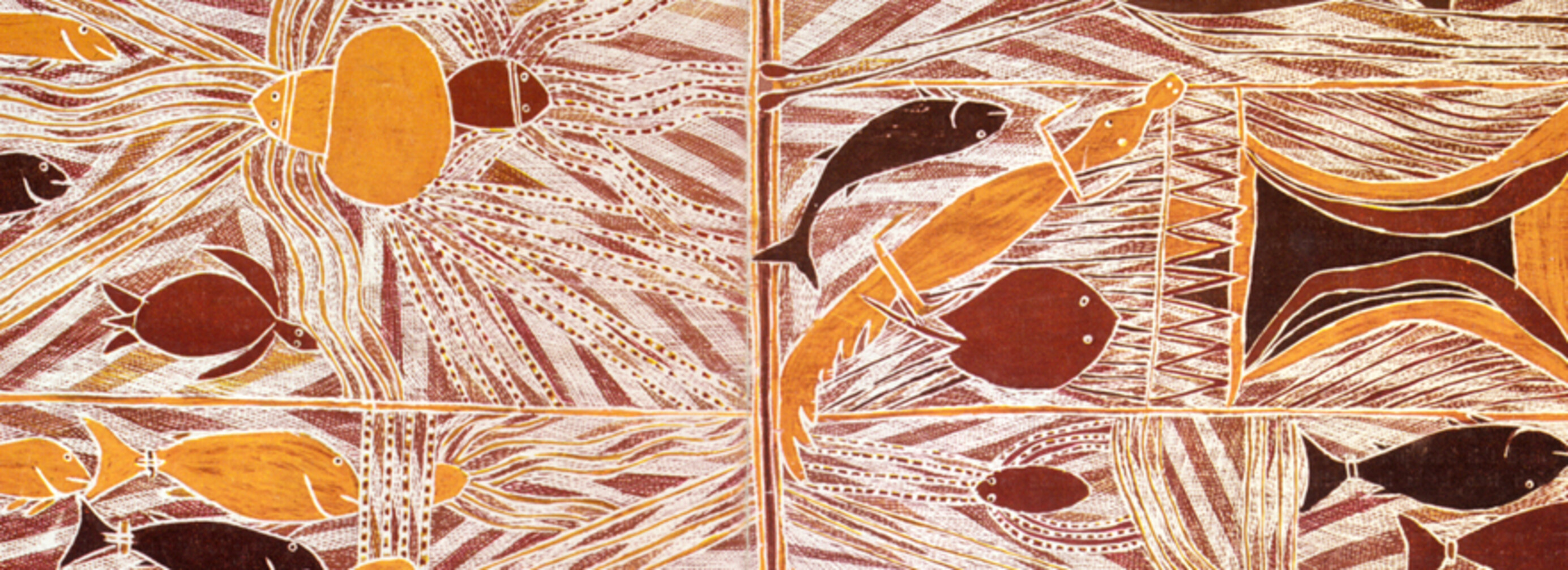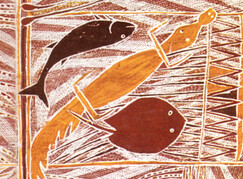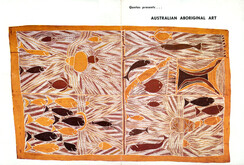This exhibition is now closed
Aboriginal Bark Painting
10 June –
30 June 1974

Australian Aboriginal Art exhibition catalogue cover (detail)
It is in the Arnhem Land areas of northern Australia that aboriginal art reached its highest level. All the 37 barks used in this exhibition came from this area, from missions centred at the area of Yirrkala.
To obtain these barks Dr Stuart Scougall, leading authority of the day on Australian aboriginal bark art, went to this area for four months to help gather the material. His expedition by plane, car, horseback and foot, took him over many thousands of miles of territory into areas where this rare form of art had lain unnoticed for many years.
The barks were obtained from stringy-bark eucalyptus trees and the art in the exhibition developed during a known period of 12,000 years.
The artist's colours were limited to red, yellow and a little olive, in addition to black and white, and all these were ground-stone or clay. The artist used a brush made of the chewed ends of green eucalyptus stalks or a few strands of human hair. Many of the paintings are called dreamtime paintings. They can represent everyday happenings such as the hunt or ceremony or may be of totemic significance. The paintings also depicted important deities, such as the Great Python and their significance in religion, ceremony or nature.
The paintings in the exhibition revealed the change in general style from the traditional to the contemporary.
Location:
Robert McDougall Art Gallery - main gallery
Exhibition number: 91


